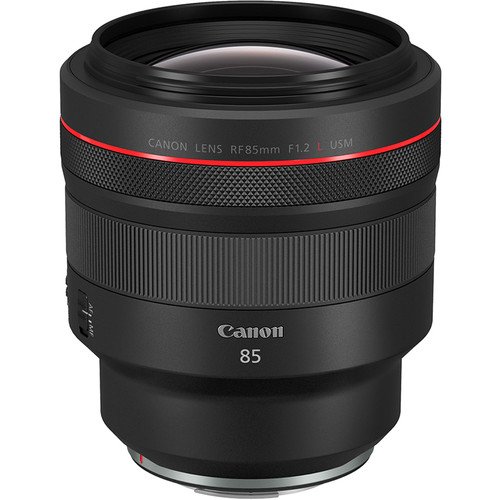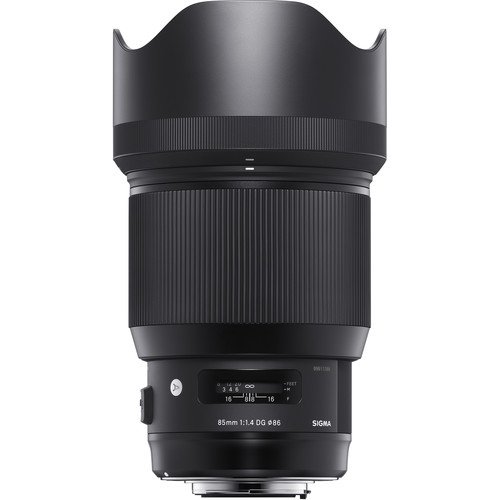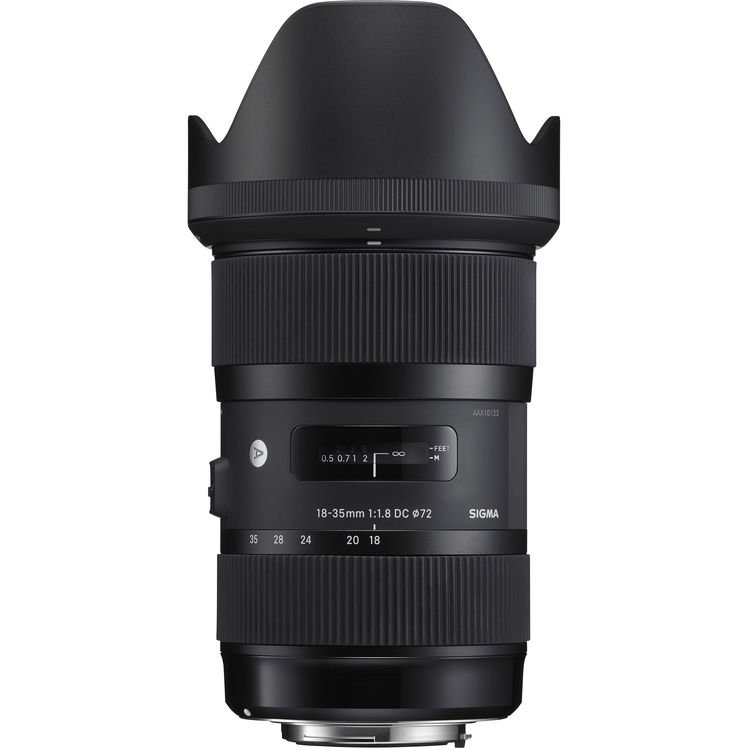The answer to this is pretty subjective. You’ll find a variety of answers out there.
In my opinion, the answer to this is entirely dependent on what type of content you’re shooting and what skill level you’re at. But overall, there are a lot of factors to take into account when selecting lenses.
Here are the main aspects I would take into consideration when looking at a lens, particularly when you’re just starting out:
PRICE
It’s no secret that lenses can be incredibly expensive. They are definitely an investment. When you begin to go down the path of searching for and purchasing a lens, it’s important to take into account what you can afford versus what you want. When you’re just starting out, I’d recommended going for a “middle of the road” price range - which will be different for each person depending on your budget. If you’re really serious about the purchase, I would personally avoid going too cheap. If you save up and invest in decent glass (note: people often interchangeably use “glass” in place of “lens”), it will last you. Based on current lens prices, a price range I would consider would be anywhere from $500 to $1200. This price, again, is so dependent not only on what you can budget for, but also on what you’ll need the lens to be capable of, which we’ll get to next.
LENS MOUNT TYPE
Pretty much every camera manufacturer has a different lens mount. Canon has the EF and RF mount. Sony has the E mount. Leica has the L mount. There are a few that cross camera manufacturer barriers, such as the PL mount (that mount style is typically reserved for cinema cameras). When selecting lenses, you’ll want to take this into account. Prices can also vary across the lens mount types. A good example is how much Canon RF mount lenses cost versus Canon EF mount. While EF mount lenses are still expensive as well, because RF lens technology is so new and more innovative, the prices are higher. Given this, you might be more tempted to buy a Canon EF mount lens and get an EF to RF adapter to be able to put your EF lens on an RF body. Related to this, brands like Sigma and Tamron make lenses that are available in multiple lens mount types, and are often more affordable than the name brand lenses. Quality can vary on third party lenses, but it really just depends on which specific lens you’re looking at from these manufacturers.
SENSOR COVERAGE
Lenses are designed to cover certain sensor sizes. You’ll want to note what size your camera sensor is when selecting what lens to buy. If you have a full frame camera body, you’ll want to get a lens that can cover full frame. If you don’t, and say buy a lens that only covers Super35/APS-C sensors, you’ll at the very least get heavy vignetting at wide focal lengths, and possibly lose other qualities such as sharpness. On the flip side, if you have a lens designed for full frame cameras on your Super35/APS-C body, you’ll have a decent amount of crop. This can be advantageous in some situations if you want to get longer focal lengths with a usually cheaper and smaller camera body.
FOCAL RANGE
You’ll want to figure out what focal range you need your new lens(es) to cover. And with this, do you want to invest in a zoom lens, which can be more versatile and more bang for your buck? Or do you want to invest in a set of prime lenses, which can achieve generally better image quality? Like I said, as you’re starting out especially, a zoom lens can be really useful. You can buy one lens that covers a wide range and you don’t have to worry about swapping lenses. But, investing in a set of prime (or even just one prime lens to start) can also be a good option. If you were going to invest in a prime lens, and only pick one to start, I’d think a lot about the main type of content you’re shooting. What does the kind of shooting you do necessitate? If you are a photographer that shoots wide landscapes primarily, I’d recommend getting a wider prime (16mm, 24mm). If you shoot a lot of portraits, I’d go with more of a longer lens (85mm). If you need something more versatile, go for a medium distance (35mm, 50mm). This thought process can also be used for selecting a zoom lens, but just thinking more about what versatility you need from the focal range.
AUTOFOCUS
Not all lenses have autofocus capability. This is particularly true of cine style lenses. The manufacturer’s of these cine lenses are designing them for film sets where there is a focus puller. If it’s important that the lens you buy have autofocus, be on the look out for that in the specs. Also, note that the newest lenses will (most times) have the best autofocus technology within them. So if you were, for example, looking at buying the Canon EF 16-35mm f/2.8 lens, the 3rd generation of this lens (denoted as “III” in the product title), will have the quickest and most effective autofocus response.
IMAGE STABILIZATION
This goes hand-in-hand with point #5 - not all lenses have image stabilization built into them. This is often a trait of mostly photography zoom lenses. Image stabilization can come in handy when shooting handheld especially. Some camera bodies have in-body image stabilization (IBIS) built in, and when coupled with a lens with image stabilization, you can achieve some smooth results. A lens with image stabilization can come in particularly handy if you have a camera body with no IBIS. At least the lens with provide some help in controlling the image’s stability.
FOCUS READ-OUT
This is kind of a small detail, but one I wish I knew to look for more when I was first starting out. If you want to be able to have a visible, numerical readout of what focus point you’re at, and you want the focus ring to physically stop at the beginning and end of the focus range, you’ll want to look for that in a lens. Some lower end lenses don’t have either of those, particularly the kit lenses that come with most DSLR and mirrorless cameras. Especially when your camera doesn’t have any sort of focus assisting features, this can make pulling manual focus a nightmare. In most circumstances, at that price point, you’re probably just using autofocus, but if you want to do something like night sky photography, knowing what focus point you’re at is crucial.
FIXED VS VARIABLE APERTURE
This common lens trait is often the sign of cheaper versus more expensive glass. A fixed aperture on a zoom lens means that the given aperture will stay throughout the focal range. For example, if you have a 24-70mm lens with fixed aperture, when you set your aperture to f/2.8, your lens will stay at f/2.8 no matter if you are at 24mm or 70mm. A variable aperture means that the aperture will change as you zoom in or out. For example, if you have a 18-55mm kit lens and you set the aperture to f/3.5 at 18mm, when you zoom into 55mm, the aperture will close down to probably around f/5.6. Variable aperture can be a problem if you want to have a live zoom move while shooting video, as you will see the light change through the focal range. It can also pose a problem in low light situations if you need to zoom all the way in on something. So knowing whether a lens has a fixed or variable aperture is important.
PHOTO LENSES VS. CINE LENSES
I’ve already touched on this in some of the points above, but there are distinct differences between a lens designed for photography and a lens designed for filmmaking.
PHOTO LENSES:
Don’t have rings with teeth for changing focus (you have to buy an adapter if you want to use something like a follow focus)
Often have autofocus and image stabilization built in
Can have variable aperture
Generally cheaper than cine lenses
More lightweight
Available as prime lenses or zooms pretty equally
Most are varifocal, meaning the focus changes when the focal length of the lens changes
CINE LENSES:
Parfocal, meaning the focus does not change when the focal length of the lens changes
Don’t have autofocus or image stabilization
More precise manual focus, iris, and zoom controls
More artistic/stylized
Generally heavier than a photo lens (but not always)
Most often prime lenses, but zooms are also available
Cine zoom lenses don’t expand or change in length as it adjusts the focal distance internally, which is more convenient for camera setups
T-stops offer a more exact measure of the amount of light that passes through the lens
More expensive than most photography lenses (but not always)
Now that I’ve listed all the aspects of lenses to consider, here are some of my personal, general recommendations for lenses to start out with, within price ranges. I have these listed as Canon EF/RF mount lenses, but you can find equivalents for most of these for whatever camera manufacturer/lens mount you prefer. Or, you can also find adapters to adapt these specific EF/RF lenses to a variety of camera bodies:
PRIME LENSES
LESS THAN $500
Canon RF 16mm f/2.8 STM Lens | $249
Canon RF 24mm f/1.8 Macro IS STM Lens | $499
Canon RF 50mm f/1.8 STM Lens (Canon RF) - The “Nifty Fifty” | $169
$500 TO $1000
Sigma 24mm f/1.4 DG HSM Art Lens for Canon EF | $779
Sigma 35mm f/1.4 DG HSM Art Lens for Canon EF | $779
Sigma 50mm f/1.4 DG HSM Art Lens for Canon EF | $779
OVER $1000
Canon RF 85mm f/1.2 L USM Lens | $2499
(Alternative: Sigma 85mm f/1.4 DG HSM Art Lens for Canon EF | $1199)
ZOOM LENSES
LESS THAN $500
Canon EF-S 18-55mm f/3.5-5.6 IS II Lens | $149
Canon RF-S 18-45mm f/4.5-6.3 IS STM Lens | $299
Canon RF-S 18-150mm f/3.5-6.3 IS STM Lens | $499
$500 TO $1000
Sigma 18-35mm f/1.8 DC HSM Art Lens for Canon EF | $679
Canon RF 24-240mm f/4-6.3 IS USM Lens | $899
OVER $1000
Canon EF 24-105mm f/4L IS II USM Lens | $1299
Canon EF 24-70mm f/2.8L II USM Lens | $1899
(Alternative: Sigma 24-70mm f/2.8 DG OS HSM Art Lens for Canon EF | $1299)
Canon EF 16-35mm f/2.8L III USM Lens | $2199


















